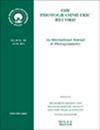对目前使用的几种块体调节系统进行了比较
IF 3.6
3区 地球科学
Q2 GEOGRAPHY, PHYSICAL
引用次数: 1
摘要
使用两组地形测量数据测试了八套航空三角测量块平差系统。迭代松弛法不能处理标准的控制模式。捆绑方法,特别是带有附加参数的捆绑方法,比模型调整的结果要好得多。在选择块调整系统时,数据处理的便捷性和输出的清晰度被认为是比绝对精度更重要的因素。本文章由计算机程序翻译,如有差异,请以英文原文为准。
A COMPARISON OF SOME BLOCK ADJUSTMENT SYSTEMS IN CURRENT USE
Eight aerial triangulation block adjustment systems were tested using two blocks of Ordnance Survey data. The iterative relaxation methods could not cope with the standard patterns of control. Bundle methods, especially with additional parameters, gave significantly better results than model adjustments. Ease of data handling and clarity of output are considered to be more important factors than absolute accuracy in choosing a block adjustment system.
求助全文
通过发布文献求助,成功后即可免费获取论文全文。
去求助
来源期刊

Photogrammetric Record
地学-成像科学与照相技术
CiteScore
3.60
自引率
25.00%
发文量
71
审稿时长
>12 weeks
期刊介绍:
The Photogrammetric Record is an international journal containing original, independently and rapidly refereed articles that reflect modern advancements in photogrammetry, 3D imaging, computer vision, and other related non-contact fields. All aspects of the measurement workflow are relevant, from sensor characterisation and modelling, data acquisition, processing algorithms and product generation, to novel applications. The journal provides a record of new research which will contribute both to the advancement of photogrammetric knowledge and to the application of techniques in novel ways. It also seeks to stimulate debate though correspondence, and carries reviews of recent literature from the wider geomatics discipline.
Relevant topics include, but are not restricted to:
- Photogrammetric sensor calibration and characterisation
- Laser scanning (lidar)
- Image and 3D sensor technology (e.g. range cameras, natural user interface systems)
- Photogrammetric aspects of image processing (e.g. radiometric methods, feature extraction, image matching and scene classification)
- Mobile mapping and unmanned vehicular systems (UVS; UAVs)
- Registration and orientation
- Data fusion and integration of 3D and 2D datasets
- Point cloud processing
- 3D modelling and reconstruction
- Algorithms and novel software
- Visualisation and virtual reality
- Terrain/object modelling and photogrammetric product generation
- Geometric sensor models
- Databases and structures for imaging and 3D modelling
- Standards and best practice for data acquisition and storage
- Change detection and monitoring, and sequence analysis
 求助内容:
求助内容: 应助结果提醒方式:
应助结果提醒方式:


